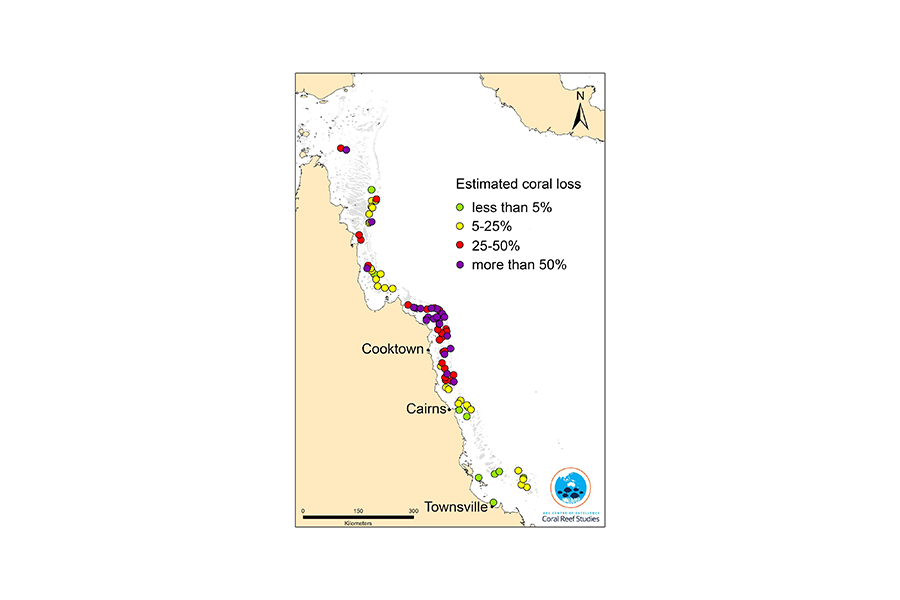Coral bleaching has killed one-third of parts of Great Barrier Reef
Loading...
Coral bleaching has destroyed at least one-third of the northern and central Great Barrier Reef, Australian scientists said Monday, days after reports that officials instructed the United Nations to omit the country from a report about climate change's impact on world heritage sites.
Mass bleaching has killed 35 percent of the coral in northern and central parts of the 1,600-mile Great Barrier Reef, the largest living organism on the planet, according to estimates from the Australian Research Council's (ARC) Centre of Excellence for Coral Reef Studies.
The percentage jumps to more than 50 percent near Cooktown, in the central part of the reef, researchers found after surveying 84 reefs. While 95 percent of the reefs in the southern part of the ecosystem survived the bleaching event, it remains the worst to have ever been observed.
James Cook University professor Terry Hughes, director for the Centre of Excellence, said he was "gobsmacked" by the scale of bleaching, which he called much worse than the other two major bleaching events in 1998 and 2002.
"It is fair to say we were all caught by surprise," Dr. Hughes told The Sydney Morning Herald. "It's a huge wake up call because we all thought that coral bleaching was something that happened in the Pacific or the Caribbean which are closer to the epicenter of El Nino events," which increase sea temperatures in the Pacific and Caribbean.
As the water warms, the coral expels the zooxanthellae algae that symbiotically live with it and provide it with nutrients and its radiant colors. Without the algae, the coral calcifies and turns white. If the waters cool, and the coral is bleached only mildly, algae can return. If the water remains warm, the coral can die.
The 2015-16 El Nino, one of the strongest ever, certainly contributed to the mass die-off of parts of the reef. But scientists say the main culprit is climate change. In fact, researchers found in April that the 1.5 degree Celsius the ocean has warmed since 1900 is mostly due to human activity.
But Australian officials have been reluctant to address the toll of climate change on the Great Barrier Reef, as well as on the country's Kakadu and Tasmanian forests. The country's Department of Environment cut its section from a recent UN report on climate change's toll on World Heritage sites, including the Great Barrier Reef, to avoid "confusion" – and a cut to tourism dollars.
"Recent experience in Australia had shown that negative commentary about the status of World Heritage properties impacted on tourism," a Department spokesperson told reporters.
The Great Barrier Reef attracts about $3.59 billion in tourism every year.
In light of the ARC's most recent report, however, UNESCO may reconsider its decision not to put the World Heritage sites on its endangered list, reported Reuters Monday.
Climate and coral reef scientists have been vocal about their disapproval of the country's climate change attitude, although the government has pledged to address coral bleaching in other ways. Environment Minister Greg Hunt will allocate an additional $50 million on top of the Department's $11 million budget to improve the water quality of the Great Barrier Reef, The Sydney Morning Herald reported last month. The funds will support clean-up efforts against sediment, nitrogen, and pesticides.
Improving water quality could improve the resiliency of the reef, and strengthen its ability to recover. But that's only if water temperatures cool, climate analysts caution.
"The key threat to the Great Barrier Reef is climate change – the government has recognised that many times," Hughes told The Sydney Morning Herald. But there is a "disconnect in the policy round governments issuing permits for 60 years for new coal mines and how that might impact on the Great Barrier Reef and reefs more generally," he said.








